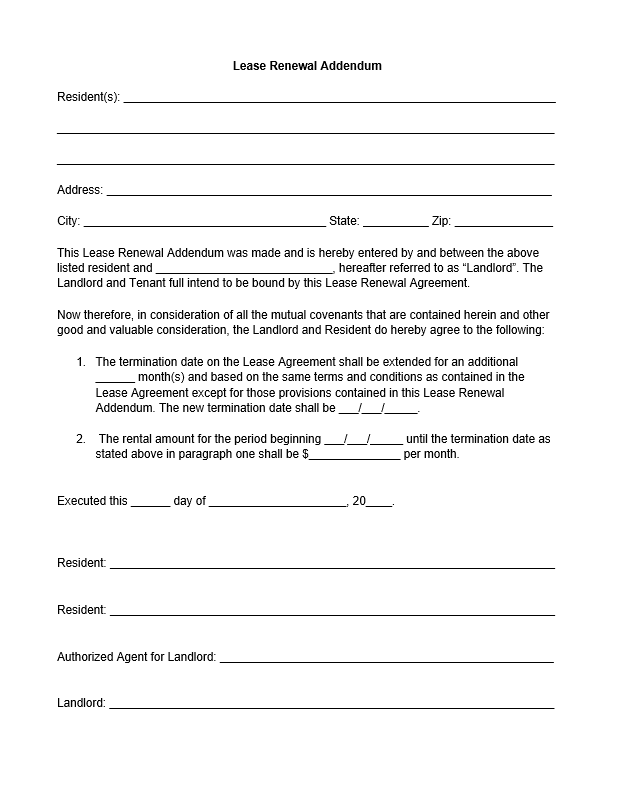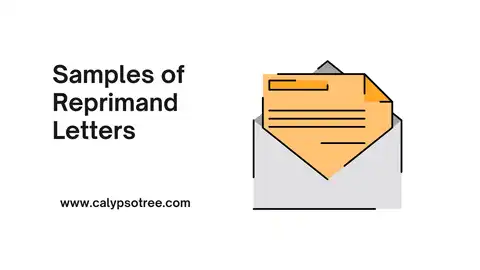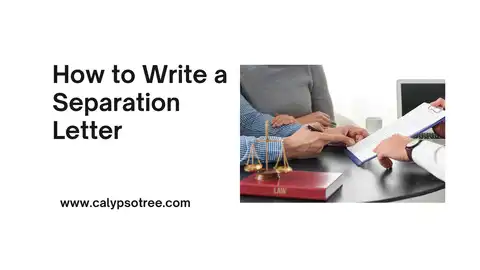Are you a landlord? If yes, it means you need the lease renewal letter example. Just like the name, the letters are functioned as proof that the landlord and tenants have agreed to lengthen the period of a house or land leasing.
Sure, both parties must agree and do the terms and conditions made before to avoid any problems in the future. Meanwhile, the templates are the structure of the letters. With templates that have been provided before, whether they are in the form of hard or soft copies, the way of making letters can be easier.
So, what should the best templates for the lease renewal letters be? There are some important parts to be there. They are the letterhead, date of the notice, the names of tenants, premises, terms and conditions, and the name of the landlord.
Make sure to bring an additional space for the signatures of both sides. In general, the letter sheet should not be too big, and it is better to be brief. It should also be understandable for all realms. Yes, your tenants may come from various realms, including both the educated and uneducated ones.
What Is Lease Renewal Letters?
A lease renewal Letters is a formal communication between a landlord and tenant discussing the continuation or discontinuation of the lease agreement.
Functions of Lease Renewal Letters
A lease renewal letter serves multiple functions crucial in maintaining a clear and effective landlord-tenant relationship. Here are the key roles it plays:
- Communication of Intent: The primary function of a lease renewal letter is to convey the landlord’s intention regarding the lease’s future. It clearly states whether the landlord wishes to extend the lease or end the tenancy once the current lease term expires.
- Formal Notice: The lease renewal letter is an official notice to the tenant about the impending end of the lease term. This formal communication ensures the tenant knows the timeline and can make necessary plans.
- Presentation of New Lease Terms: If the landlord intends to renew the lease, the letter outlines the proposed terms for the new lease. It could include changes in rent, duration, or other conditions. By presenting this information upfront, the tenant can decide whether to accept the new terms.
- Explanation for Non-Renewal: In cases where the landlord does not wish to renew the lease, the letter should provide a clear explanation for this decision. While not always required, this can help maintain a positive landlord-tenant relationship.
- Move-Out Instructions: If the lease is not renewed, the letter should provide detailed instructions for moving out. It can include the move-out date, cleaning requirements, key return instructions, and information about the security deposit return.
- Invitation for Negotiation: In some cases, the lease renewal letter can also serve as an invitation for the tenant to negotiate the terms of the new lease. It is particularly relevant if the tenant is in good standing and the landlord is open to discussion.
A lease renewal letter ensures a smooth transition between lease terms or towards the end of a tenancy, minimizing potential misunderstandings or disputes.
What to Include in a Lease Renewal Letters?
Here’s what you should include in a lease renewal:
- Letter Date: The date when the letter is written and sent. It is important to record-keeping and ensure the notice is sent within the required timeframe.
- Tenant’s Name and Address: The full name of the tenant(s) and the rented property’s address. It ensures the notice is directed to the correct individuals and property.
- Lease Expiration Date: The date when the current lease agreement is set to expire. It helps to clarify the timeframe being discussed.
- Renewal Terms: If the lease is being renewed, outline the terms of the new lease. It could include rent changes, the new lease’s duration, or other terms and conditions. If the lease is not being renewed, this should be clearly stated.
- Response Instructions: Instructions for how the tenant should respond to the notice. It could include a deadline for response, who to contact, and how to contact them (e.g., phone, email, in person).
- Landlord’s Signature: The landlord or property manager should sign the letter. It makes the notice official and confirms the information is coming from the landlord or property manager.
Remember, keeping a copy of any lease renewal notice for your records is important. It’s also good to send the notice via certified mail or another method that provides proof of delivery.
Different Types of Lease Renewal Letters
It can take several forms, each tailored to the specific circumstances. Here are some prevalent types:
- Regular Lease Renewal Letters: This is the most frequently encountered lease renewal letter. It lets the tenant continue the lease under the exact terms and requirements of the initial contract.
- Lease Renewal Letter Incorporating Rent Increase: This type of letter extends the request to continue the lease to the tenant but also communicates a rent increase. The letter should specify the amount of the increase and the date it will take effect.
- Commercial Lease Renewal Letters: It is utilized for commercial properties. The terms and requirements may be more intricate than those of a residential lease, and the letter may include details about rent increases, property modifications, or updates to the lease terms.
- Lease Non-Renewal Letters: This letter is employed when the landlord does not intend to renew the lease. Depending on local legislation, the landlord must provide this notice to the tenant, typically 30 to 60 days before the lease concludes.
- Lease Renewal Negotiation Letter: This type of letter is utilized when the tenant desires to arrange the lease renewal terms. The tenant may suggest differences in the rent, duration of the lease, or other lease terms.
It’s always advisable to seek legal advice when drafting these letters to ensure all legal requirements are met.
Common Mistakes in Lease Renewal Letters
When drafting lease renewal letters, landlords and tenants can make mistakes that could lead to misunderstandings or legal issues. Here are some common mistakes and how to avoid them:
- Not Providing Enough Notice: Landlords and tenants must provide sufficient notice for lease renewals. The notice period should be clearly stated in the original lease agreement. Failing to provide enough notice could lead to unnecessary complications.
- Ignoring the Terms of the Original Lease: The original lease agreement usually outlines the terms and conditions for renewal. Ignoring these terms when drafting a lease renewal letter can lead to disputes.
- Not Clearly Stating Changes: If there are changes in the lease terms, such as a rent increase, these should be clearly stated in the lease renewal letter. Clear language can lead to understanding.
- Not Putting Everything in Writing: All agreements, including any changes to the lease terms, should be put in writing. Verbal agreements can be difficult to enforce.
- Not Reviewing the Letter Carefully: Both landlords and tenants should review the lease renewal letter carefully before signing. It can help catch any errors or omissions.
By avoiding these common mistakes, landlords and tenants can ensure a smoother lease renewal process. A letter is always a good idea to ensure all legal requirements are met.
The Role of Disclaimers in Lease Renewal Letters
In lease renewal letters, disclaimers play a crucial role in protecting the rights of both landlords and tenants. They serve to clarify the terms and conditions of the lease renewal and limit potential liabilities. Here’s a closer look at why disclaimers might be important:
- Clarification of Terms: Disclaimers can clarify the lease renewal terms. They can specify that the renewal is subject to the same terms and conditions as the original lease unless otherwise stated in the renewal letter.
- Limitation of Liability: Disclaimers can limit the landlord’s liability in certain situations. For example, a disclaimer might state that the landlord is not responsible for certain repairs or maintenance.
- Legal Protection: Disclaimers can provide legal protection for the landlord. If a dispute arises, the courts will look at the lease renewal terms, including disclaimers, to resolve the issue.
- Tenant Acknowledgement: A disclaimer can also ensure the tenant acknowledges and understands the lease renewal terms. It can help prevent misunderstandings and disputes.
Including a disclaimer in a lease renewal letter can have significant legal implications. Therefore, it’s advisable to consult with a legal professional when drafting a lease renewal letter with a disclaimer. They can ensure the disclaimer is legally sound and provides the necessary
Lease Renewal Letters Templates
Despite the type of template mentioned above, there is another template that includes the disclaimer. Basically, it is functioned like the terms and conditions. However, it is commonly equipped by the legal force. It means if one of those two parties cannot follow the rules, there is the threat of legal that waits for him or her.
The disclaimer can also be typed on the different sheet from the main letter. It means that it can be optional. In fact, many landlords tend to feel enough only with the terms and conditions without the letter is strengthened by the legal force.
Lease Renewal Letter Example
Lease Renewal Letters serve as formal communication about continuing the lease agreement. This article provides a comprehensive guide on various aspects.
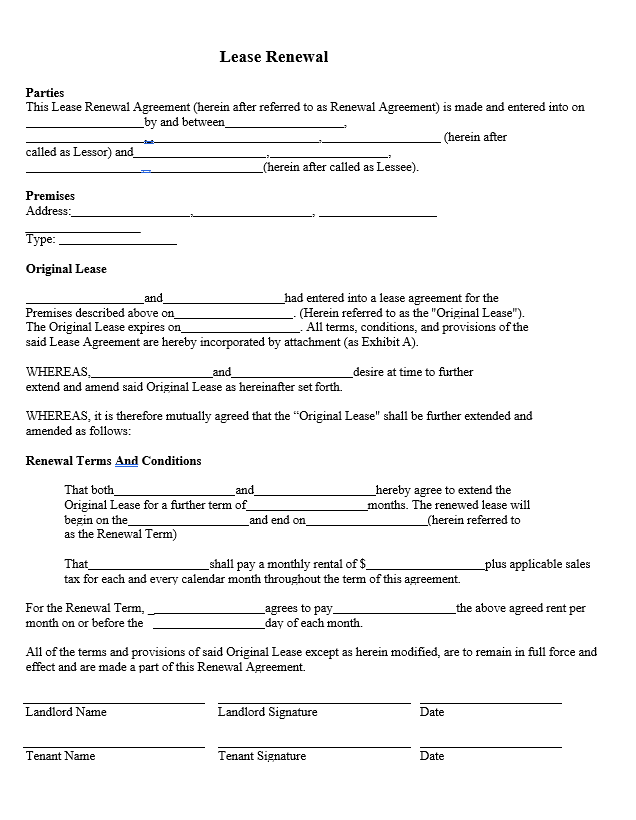
Lease Renewal Letter Template
It includes placeholders for necessary information such as the tenant’s name, property address, terms of the new lease, and more. This template can be customized to suit individual needs and ensures that all critical information is included.
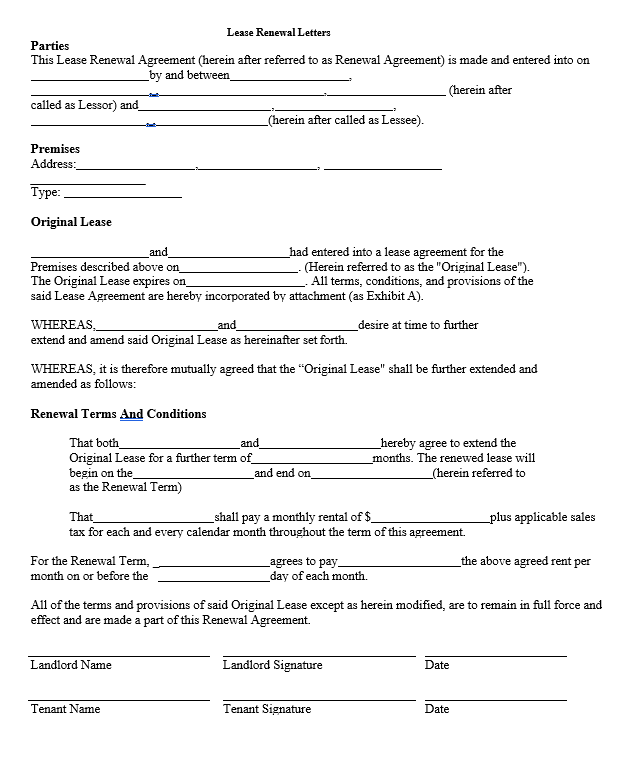
Lease Renewal Addendum
An add-on to the current lease, it raises the lease period and outlines any differences to rent or conditions. Both parties must sign for validity.
Lease Option Renewal Letter
It contains an opportunity to buy the property, detailing the purchase times, cost, and option exercise duration.
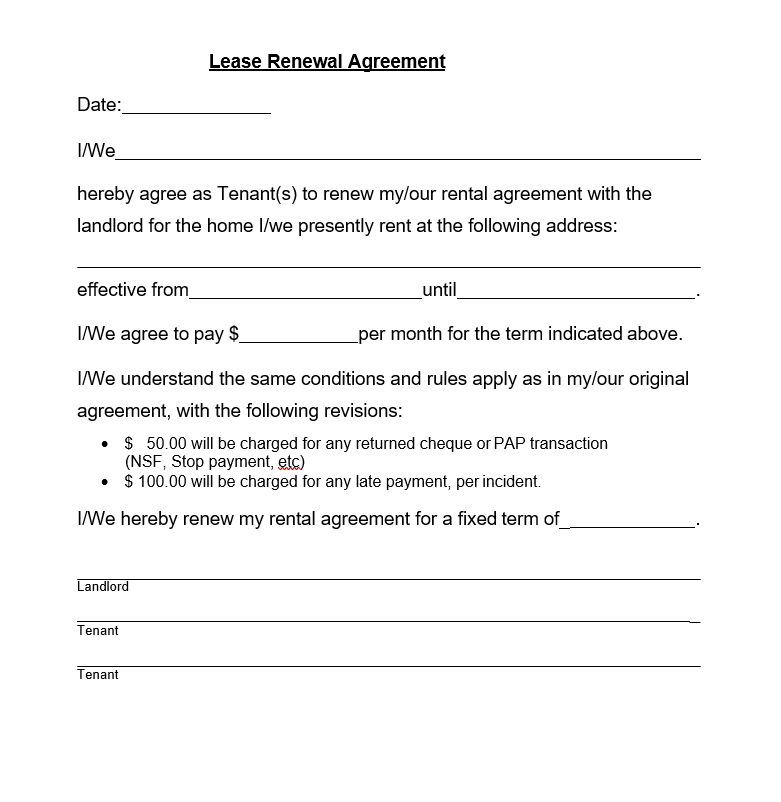
Lease Renewal Letter PDF
Landlords can conveniently use a downloadable PDF version of a lease renewal letter. This fillable form can be downloaded, completed, and sent to tenants, making the process more efficient.
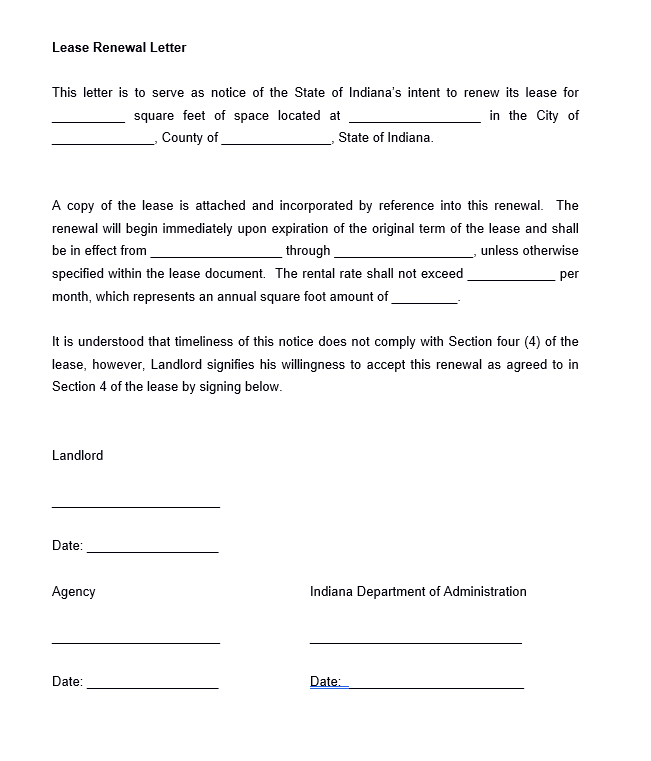
Lease Renewal Letter with Rent Increase
In such cases, it’s crucial to communicate this change clearly and respectfully to the tenant. The letter should outline the causes for the growth and the new amount to be paid.
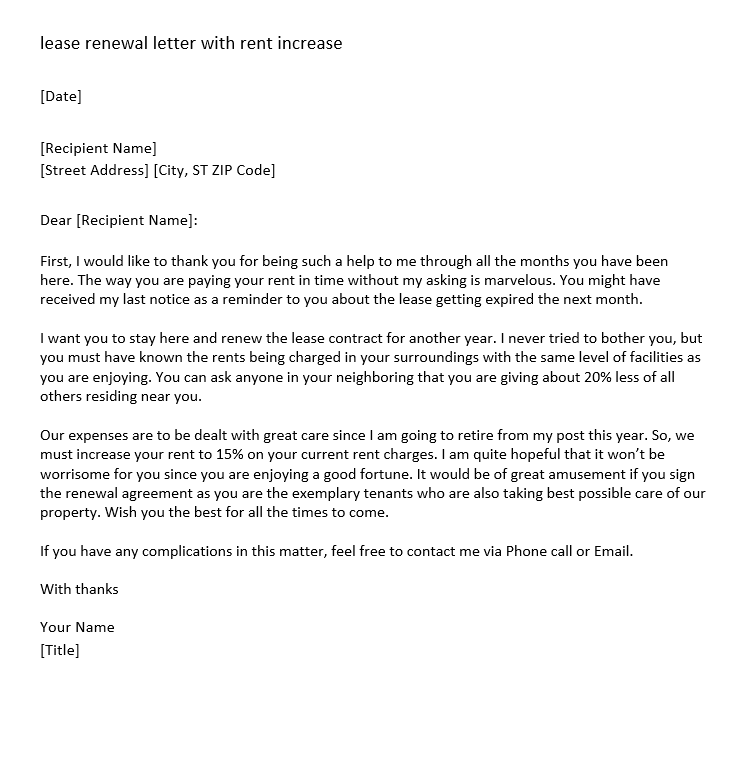
Not Renewing Lease Letter
When the owner does not continue, it explains why and provides move-out instructions.
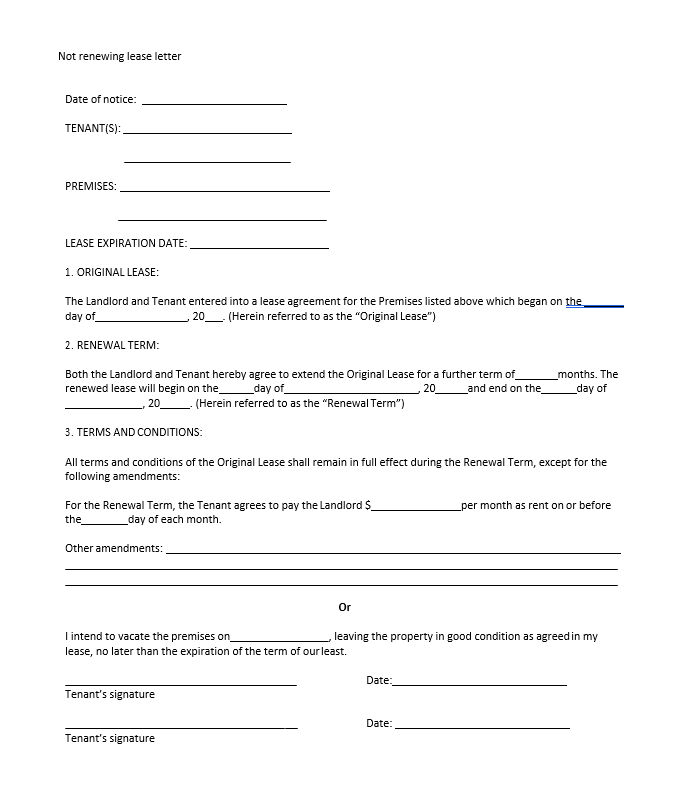
Lease Renewal Letter to Tenant
When offering to tenants, landlords can use a specific template. This letter should outline the new lease terms, any changes from the previous agreement, and a deadline for the tenant to respond.
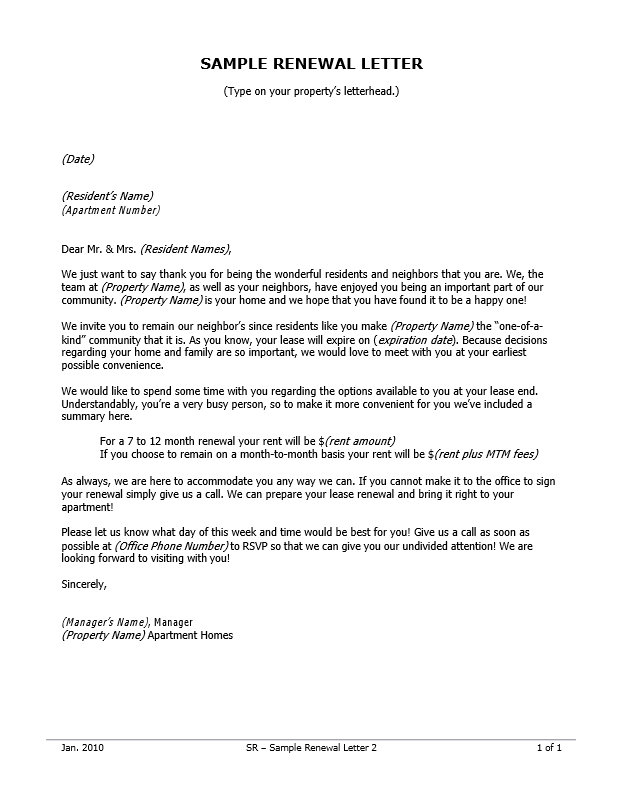
Commercial Lease Renewal Letter
Tailored to commercial, this letter outlines the new lease duration, considering the unique conditions of commercial.
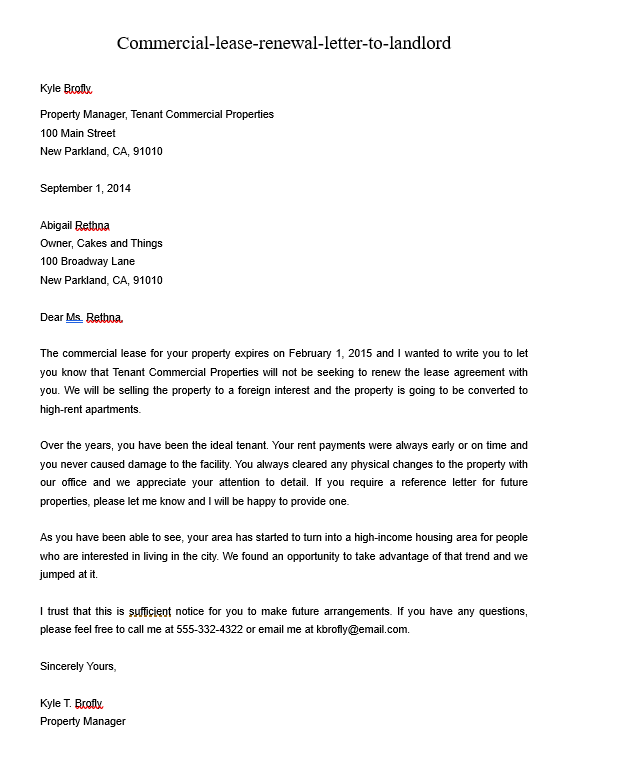
End of Lease Letter to Tenant from Landlord
Formal notification of the lease end may also indicate if the landlord is open to lease renewal. If not, it provides move-out instructions.
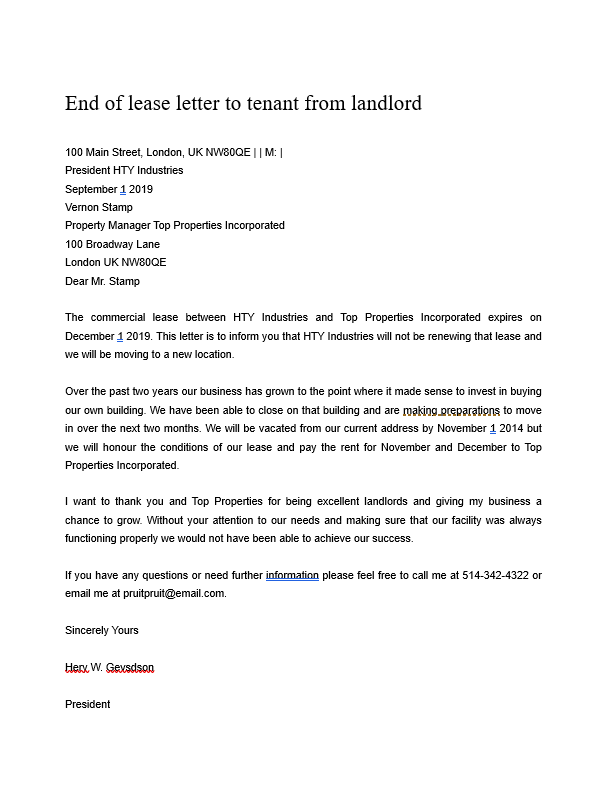
Lease Renewal Letter to Landlord
Tenants can also initiate lease renewal through a formal letter. This letter should express the tenant’s desire to continue living in the property and their agreement to the new lease terms.
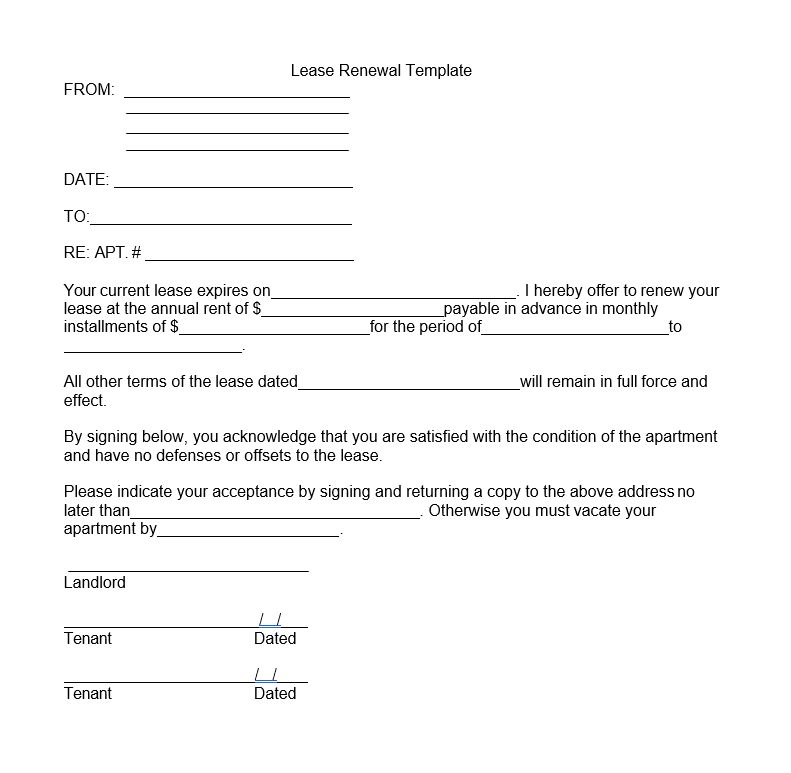
Landlord Lease Renewal Letter PDF
A downloadable PDF version specifically designed for landlords can also be used. This fillable form simplifies the process, ensuring all necessary information is included
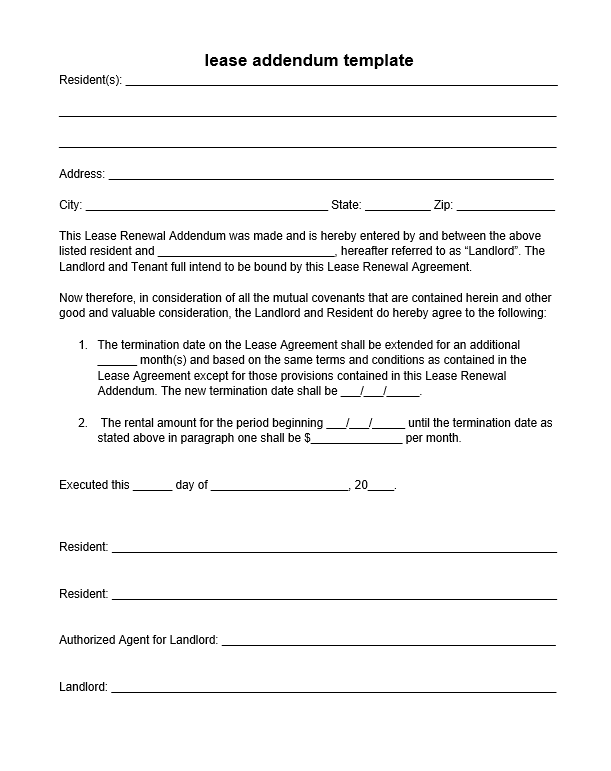
Lease Extension Addendum
A simple document opens the lease period without changing the contract’s terms. Both parties must sign for validity.
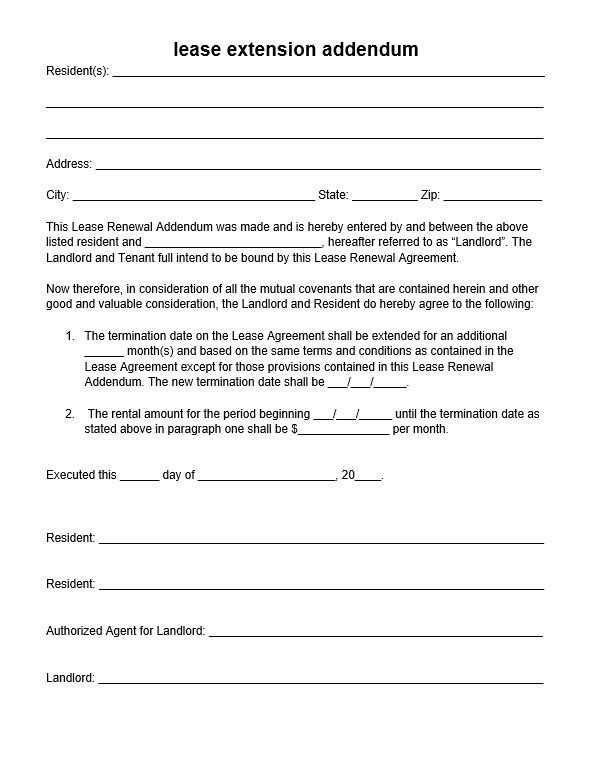
Benefits of lease Renewal Letters?
Anyway, what are actually the benefits of lease renewal letters? Sure, for both parties, it is necessary to have the renewal letters along with the signatures and probably seal. It is as proof if the tenants have paid the renewal cost. Meanwhile, when the tenants have not, it can also be proof for the landlord to make further actions.
Here are a few key advantages:
- Clear Communication: provide a formal way to communicate about the lease extension. It assists in avoiding misconceptions and provides both parties are on the exact page regarding the lease extension terms.
- Legal Protection: It serves as a legal document that can be used in court if disputes arise in the future. It provides proof of agreement.
- Documentation: It can be helpful for financial and tax purposes. It also records the landlord-tenant connection, which can be useful in future negotiations.
- Flexibility: It allows both parties to deal with terms such as rent adjustments or additional modifications to the lease agreement. It can be beneficial for both landlords and tenants.
- Convenience: For tenants, It allows them to extend their stay without the hassle of moving out and discovering a new location. For landlords, it ensures continued occupancy and income from the property.
It’s important for landlords and tenants to carefully check it before signing to ensure all terms are understood and agreed upon.
How do I extend a tenancy agreement?
The letters with terms and conditions mean giving tenants some rights and duties regarding the house or land they lease. Some examples are they must keep the house cleaning, not bring the pets if the conditions are not necessary, and still many more. For those benefits, it is reasonable to say that the lease renewal letters are necessary for the leasing process.

The content creator team at calipsotree.com is dedicated to making topics accessible to everyone, with over 9 years of experience in writing and breaking down complex concepts into easy-to-understand articles that answer readers’ financial questions.






